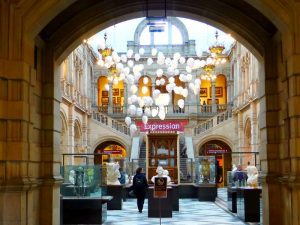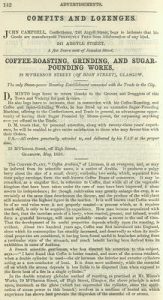The coffee roasting industry of Italy, and why it has been slow to adapt to what it called the “new coffee era”. Coffee is basically quintessentially Italian, but it has remained behind Americans in innovating and making it the global product that it is today.
Since the birth of Starbucks, the coffee industry has not changed in hundreds of years, but it took the Seattle-born company, and other companies such as Nestle to change the way coffee is served. Specifically:
- An Italian developed the first espresso machine, but a Swiss firm, Nestlé,
conquered the market for personal espresso-makers with its Nespresso system. - Starbucks was inspired by founder Howard Schultz’ visit to cafes in Milan, but he revolutionized it to provide fast service and social ambience.
Today, Italy’s coffee firms are trying to grab more of the global industry for themselves. There is a movement towards mergers between large coffee manufacturers and roasters from Italy, and homegrown brands from other countries. For example:
- Lavazza, Italy’s biggest coffee firm, buying Douwe Egberts’ Carte Noire premium brand for €800m ($870m), making it the market leader in France.
- The initial public offering of 40% of Massimo Zanetti, to raise capital for expansion. Zanetti owns a score of brands, including Boncafé, an Asian roaster; and is buying a stake in Club Coffee, a Canadian firm with which it has developed compostable capsules.
Another noteworthy fad in the industry is the curiosity for the “science” of coffee-making—improving grinding methods, better monitoring of water quality, and so on. Illy caffé was an early innovator, having pioneered the use of pressurised cans when most others were still selling coffee in paper bags.
More so the high street is becoming aware of what is going into their daily coffee and have a b etter understanding of taste and cost, – Today’s coffee customer understand more about the coffee and the Baristas that serve it
etter understanding of taste and cost, – Today’s coffee customer understand more about the coffee and the Baristas that serve it
What seems to be the core strength of today’s top coffee roasters is disappearing with no real differentiation in the process, of roasting coffee – Coffee is more about education and presentation and understanding the needs of a new type of coffee customer that are queuing to drink it new types of coffee blends that large chains have trouble producing, And with greater volumes passing through independent chains and, baristas representing an important part of this new supply chain –
There understanding of the customer is part on a New age of coffee production
Baristas working with Blendly have access to the production and manufacturing  services and can advise the new type of Speciality coffee chain on cost and taste, – Blendly Services have been developed around the economies of choice allowing greater transparency around the coffee offering
services and can advise the new type of Speciality coffee chain on cost and taste, – Blendly Services have been developed around the economies of choice allowing greater transparency around the coffee offering
And as palates are changing none more so than how we enjoy coffee, with more people purchasing barista style machines for their homes and purchasing more and more international origin coffees – The baristas working with blendly offer a new opportunity in the coffee industry.



 Kelvingrove Art Gallery and Museum houses one of Europe’s great art collections. It is amongst the top three free-to-enter visitor attractions in Scotland and one of the most visited museums in the United Kingdom outside of London.
Kelvingrove Art Gallery and Museum houses one of Europe’s great art collections. It is amongst the top three free-to-enter visitor attractions in Scotland and one of the most visited museums in the United Kingdom outside of London.


 difference lies in our genetic composition, especially within our sensory receptors. It means that the coffee you serve is a determination of as much the environment as it is blend. Letting your customers understand what is in the blend allows your customer to better associate your and your brand
difference lies in our genetic composition, especially within our sensory receptors. It means that the coffee you serve is a determination of as much the environment as it is blend. Letting your customers understand what is in the blend allows your customer to better associate your and your brand Working with Blendly you can engineer a taste that suits you or your customer all our blends are loved by many and offer a great starting point all coffee drinkers but remember how we taste coffee and what we taste is different to each individual and the taste of the product in Unique to them
Working with Blendly you can engineer a taste that suits you or your customer all our blends are loved by many and offer a great starting point all coffee drinkers but remember how we taste coffee and what we taste is different to each individual and the taste of the product in Unique to them with a lauadge that customers associated with the you delivering the best coffee in the world.
with a lauadge that customers associated with the you delivering the best coffee in the world.

 the types of freelancers and creative class workers we find in places like The Proud East today.
the types of freelancers and creative class workers we find in places like The Proud East today. Coffee brewing instructions from CHEMEX
Coffee brewing instructions from CHEMEX Step 1: Get into the grind
Step 1: Get into the grind cone has three layers, and place it into the top of the CHEMEX® brewer. The thick (three-layer) portion should cover the pouring spout.
cone has three layers, and place it into the top of the CHEMEX® brewer. The thick (three-layer) portion should cover the pouring spout. cone. Feel free to use more if you prefer it stronger; our CHEMEX® brewing process eliminates bitterness.
cone. Feel free to use more if you prefer it stronger; our CHEMEX® brewing process eliminates bitterness. from the heat and allow it to stop boiling vigorously.
from the heat and allow it to stop boiling vigorously.

 indulge in the flavour.
indulge in the flavour. either a glass stove top or gas flame both at low heat. If you have an electric coil stove top, you must utilize the CHEMEX® stainless steel wire grid (TKG) in between the CHEMEX® and the coils to prevent breakage. Be sure that there is a small amount of liquid in the carafe before placing it on a warm heating element.
either a glass stove top or gas flame both at low heat. If you have an electric coil stove top, you must utilize the CHEMEX® stainless steel wire grid (TKG) in between the CHEMEX® and the coils to prevent breakage. Be sure that there is a small amount of liquid in the carafe before placing it on a warm heating element. service. Remove the wooden handle and continue to hand wash with warm soap and water, or place the coffeemaker securely in the dishwasher.
service. Remove the wooden handle and continue to hand wash with warm soap and water, or place the coffeemaker securely in the dishwasher. coffeemaker. Our CHEMEX® 2-Quart Water Kettle achieves the perfect brewing temperature with functional elegance. Made from heavy-walled heat-resistant glass, our flat-bottomed kettle will ensure a delightful boiling and brewing process. The unique silicone stopper keeps the brewed water at peak temperature while venting steam, so the neck stays cool to the touch for safe handling.
coffeemaker. Our CHEMEX® 2-Quart Water Kettle achieves the perfect brewing temperature with functional elegance. Made from heavy-walled heat-resistant glass, our flat-bottomed kettle will ensure a delightful boiling and brewing process. The unique silicone stopper keeps the brewed water at peak temperature while venting steam, so the neck stays cool to the touch for safe handling.

 ound Scotland, giving a value and choice and setting new opportunities for coffee outlets to develop their own coffee taste and flavours.
ound Scotland, giving a value and choice and setting new opportunities for coffee outlets to develop their own coffee taste and flavours. people purchasing barista style machines for their homes and purchasing more and more international origin coffees and customers expecting more.
people purchasing barista style machines for their homes and purchasing more and more international origin coffees and customers expecting more. This type of transparency is allowing independent coffee chains to better establish their local brands in a growing market place which currently supplies approximately 165 million cups of tea and around 70 million cups of coffee that is consumed in the UK each day, according the UK Tea Council, the market for hot beverages can be considered extremely robust.
This type of transparency is allowing independent coffee chains to better establish their local brands in a growing market place which currently supplies approximately 165 million cups of tea and around 70 million cups of coffee that is consumed in the UK each day, according the UK Tea Council, the market for hot beverages can be considered extremely robust.

 beautiful part of the world, they developed the coffee blend for The Red Brolly Inn and the art of scalable production that allows great tasting coffee to be roasted and distributed.
beautiful part of the world, they developed the coffee blend for The Red Brolly Inn and the art of scalable production that allows great tasting coffee to be roasted and distributed.
 create your blend, then roast it just in time based on a selection of premium green bean that can create any type of coffee taste you can imagine at a very affordable price.
create your blend, then roast it just in time based on a selection of premium green bean that can create any type of coffee taste you can imagine at a very affordable price. combination of green beans, along with its corresponding cupping notes to better understand your coffee.
combination of green beans, along with its corresponding cupping notes to better understand your coffee.